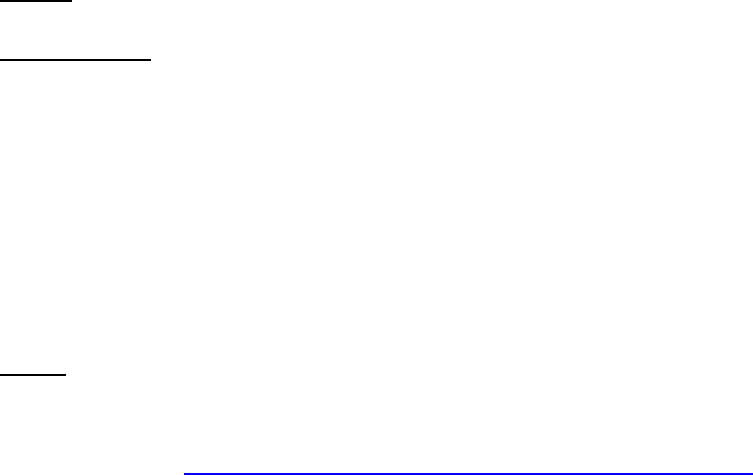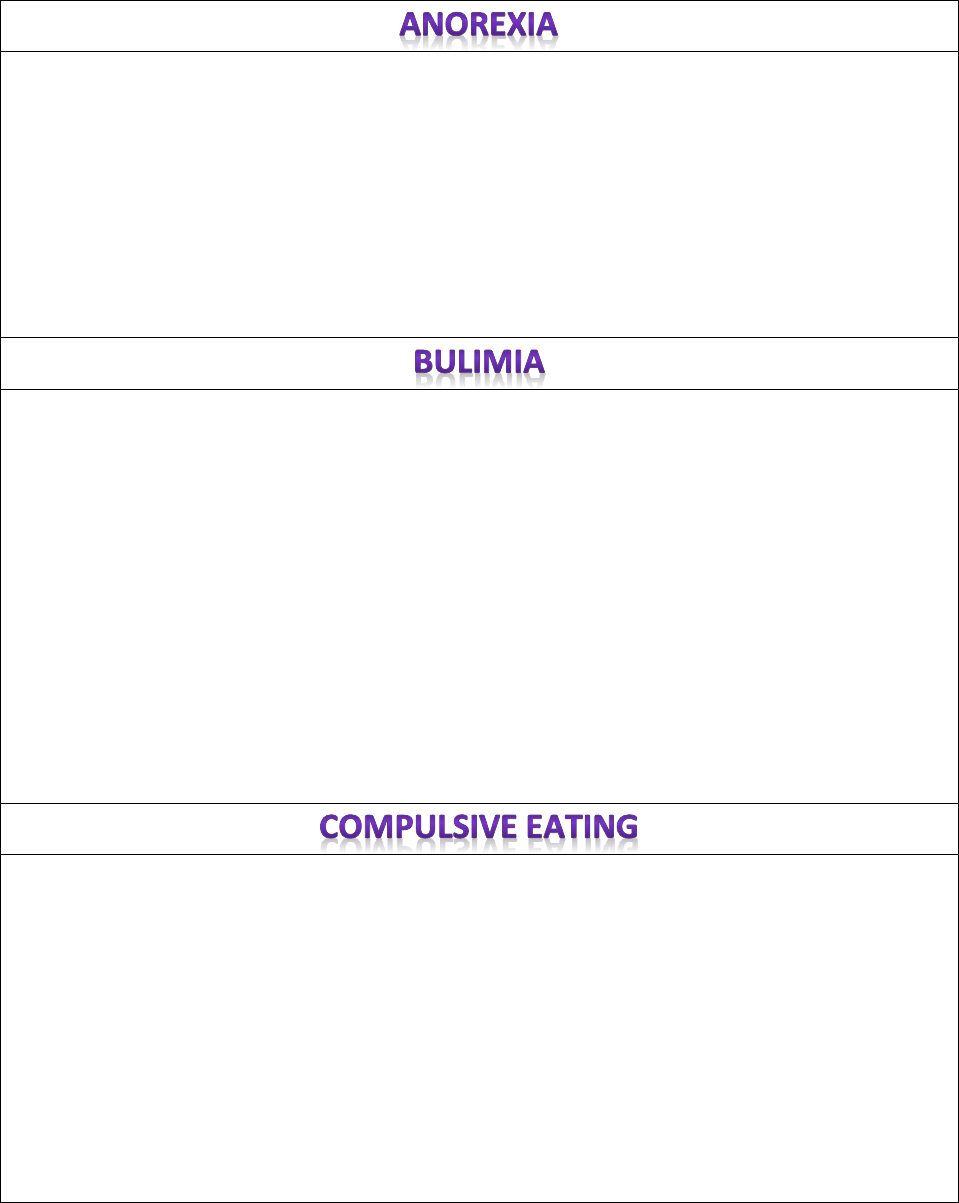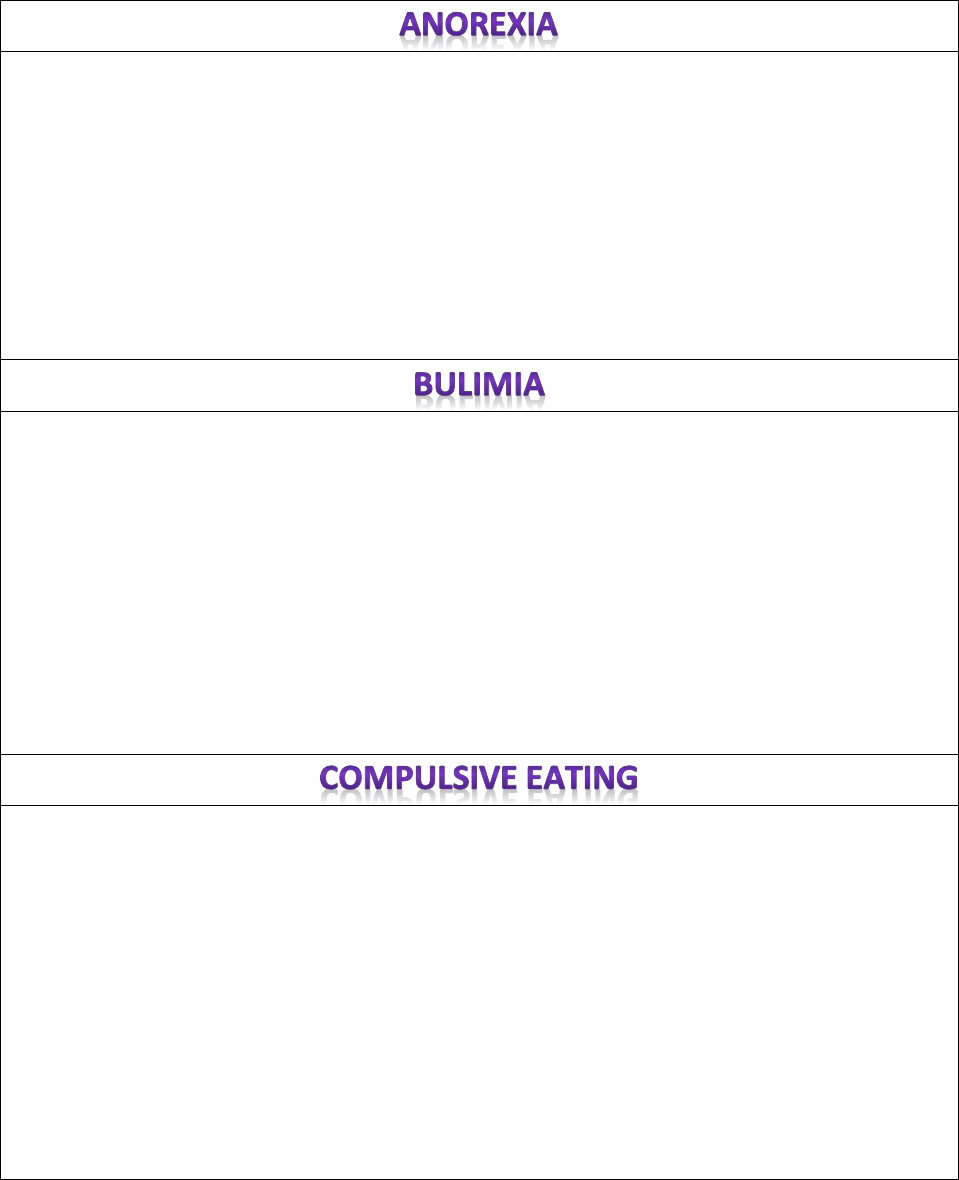
Kim Graybill/2014
The ABC’s of Eating Disorders 11.3.9 C
Day 1:
Intro Activity: Have students read “The Day Off” and answer the questions that
follow to get them to think about eating habits. Discuss their answers and lead
them to the topic of eating disorders. Defined as…
Eating disorders are a group of serious conditions in which you're so preoccupied
with food and weight that you can often focus on little else. The main types of
eating disorders are anorexia nervosa, bulimia nervosa and compulsive eating
disorder, known as binge eating or obesity.
View: The YouTube clip about Eating Disorders and have students fill out the True
or False statements while they watch it. Discuss and go over answers afterwards.
http://www.youtube.com/watch?v=isb2W1_8Urk
Statements Include:
1. Eating disorders have a lot to do with control. (True)
2. Eating disorders are harmless to the body. (False)
3. Eating disorders are like an addiction or disease. (True)
4. Eating disorders are just a phase people go through and will eventually get
over. (False)
5. Both males and females can be victims of eating disorders. (True)
6. Eating disorders can be fatal. (True)
7. Eating disorders can affect all ages; children, teens and adults. (True)
8. You can always tell someone has an eating disorder just by their
appearance. (False)
9. People can have more than one eating disorder. (True)
10. Thinking about food all the time is a symptom of eating disorders. (True)

Kim Graybill/2014
Day 2:
Intro: Review the ABC’s or three basic types of eating disorders…
A=Anorexia
B=Bulimia
C=Compulsive Eating
Discuss & Notes: Have students take notes about the eating disorders from the
power point.
Review Activity: Divide students into 4 groups and send them to a kitchen area
with a white mini-board divided into A-B-C sections and an envelope containing
slips describing characteristics of each eating disorder. Students are to place
characteristic slips into appropriate section. When done, have teacher evaluate
for correctness. Remove any slips that are incorrect and re-check when they’ve
changed their answers.
When totally correct, give students a handout of the A-B-C grid and have them
write the characteristics into the correct section to use as their notes.
Bring them back to their seats to discuss these characteristics in more depth and
answer any questions they may have about eating disorders.
Days 3 & 4
Picture Analysis Project: Using the information about the ABC eating disorders
from notes, PPT, and clips, students will create a WORD document or GLOG titled
“Picture Analysis. See guide sheet for details.

Kim Graybill/2014
ABC Eating Disorder Characteristics Name_________________
Restricting foods Distorted body image
Lose 15-20% of ideal body weight May compulsively exercise
Obsessed with desire to be thin and fear becoming fat
Possible hair loss, brittle bones, organ damage and death
Extreme over-eating with high fat/calorie foods known as bingeing
Purge foods typically by vomiting or laxative abuse
Appear to be of normal body weight
Possible tooth erosion, and esophagus/stomach problems
Often visit restroom right after eating large quantities of food
Secretive bingeing and hoarding of junk foods
Regularly eat large quantities of food at one time
Eat quickly until uncomfortably full
Typically weigh >30% or more of ideal body weight Excess body fat
Lack of control over eating habits and exercise
Possible effects are weight gain, high blood pressure, heart disease &
diabetes

Kim Graybill/2014
ABC Eating Disorder Characteristics Name_________________
Kim Graybill/2014
